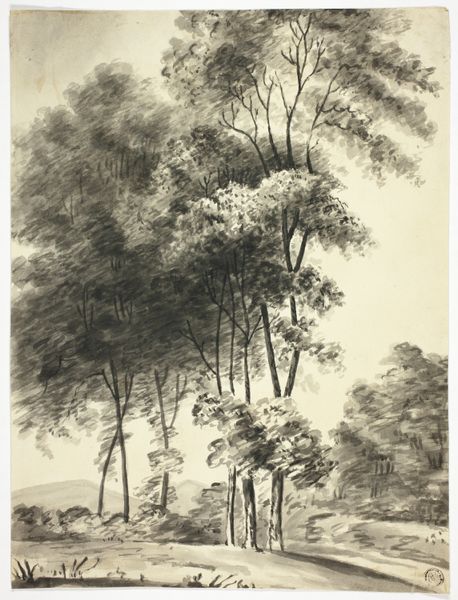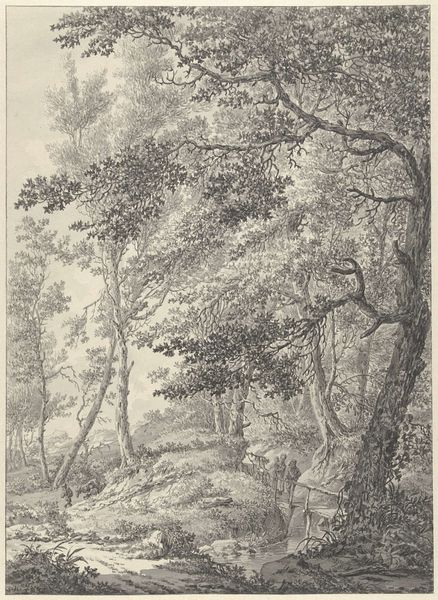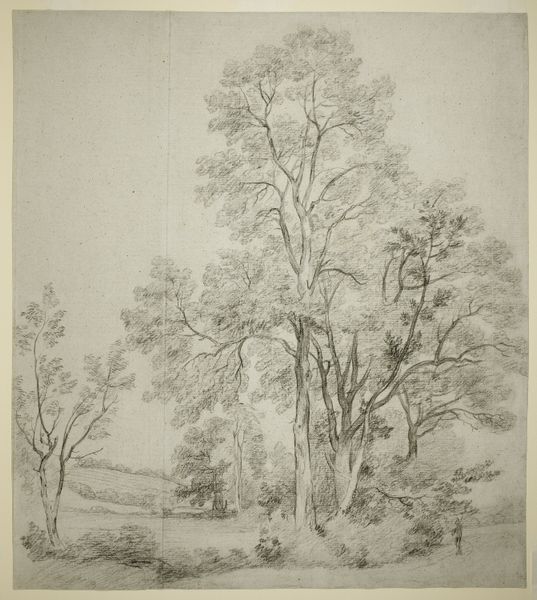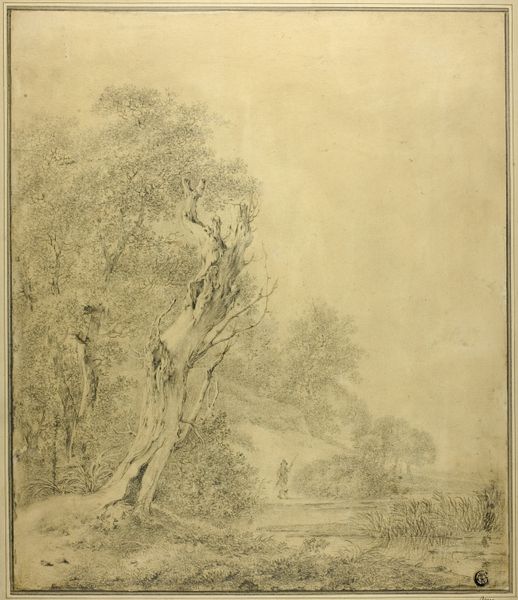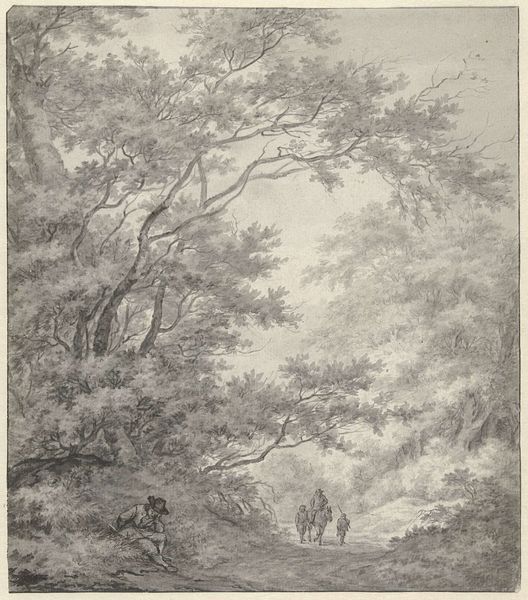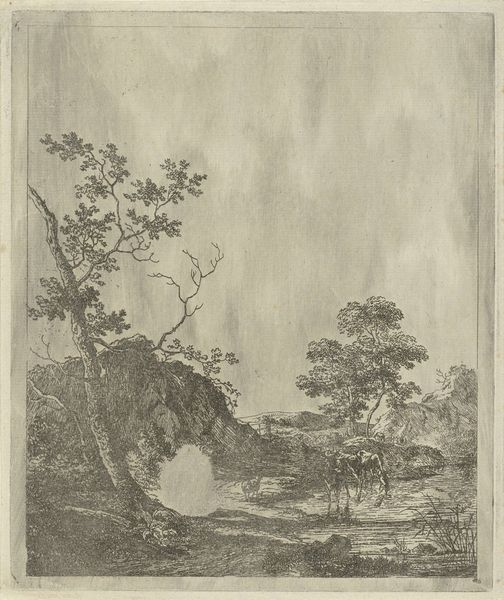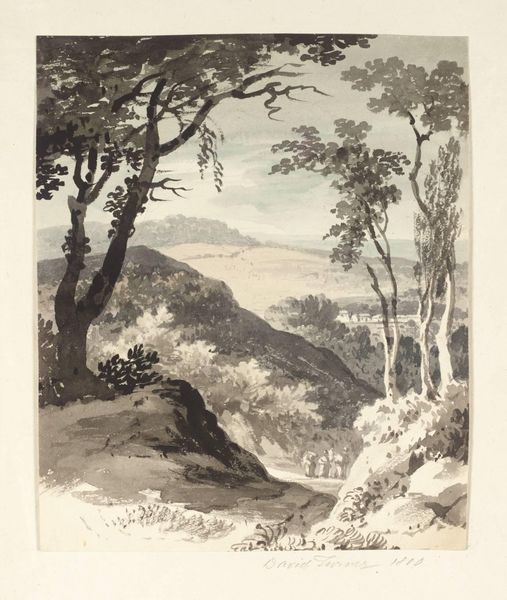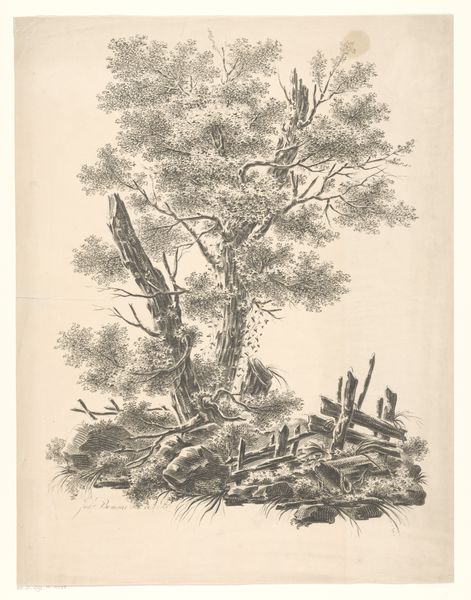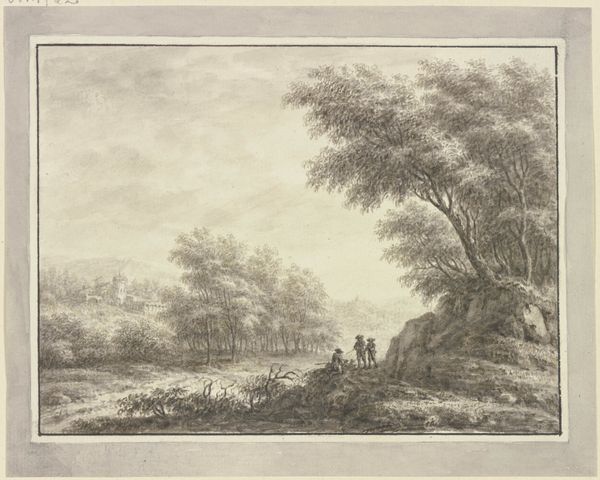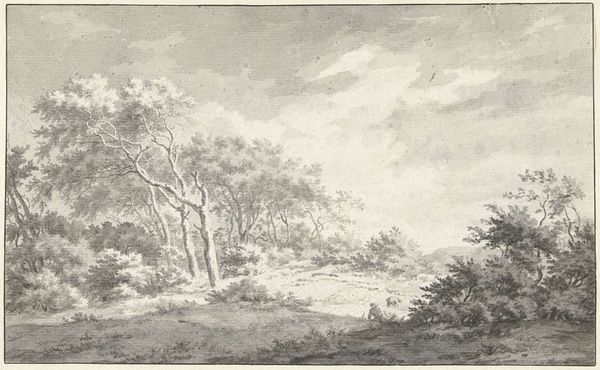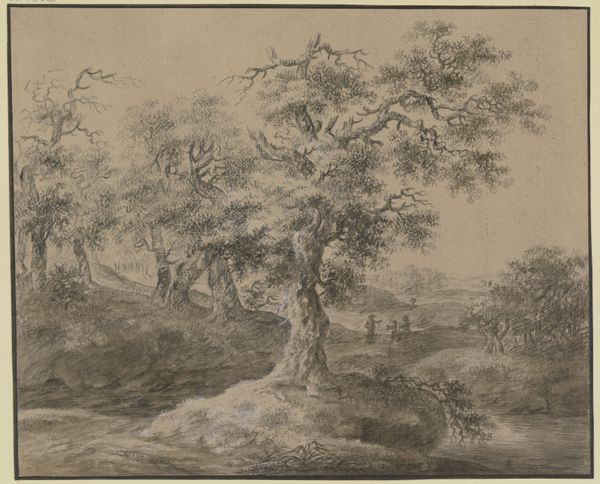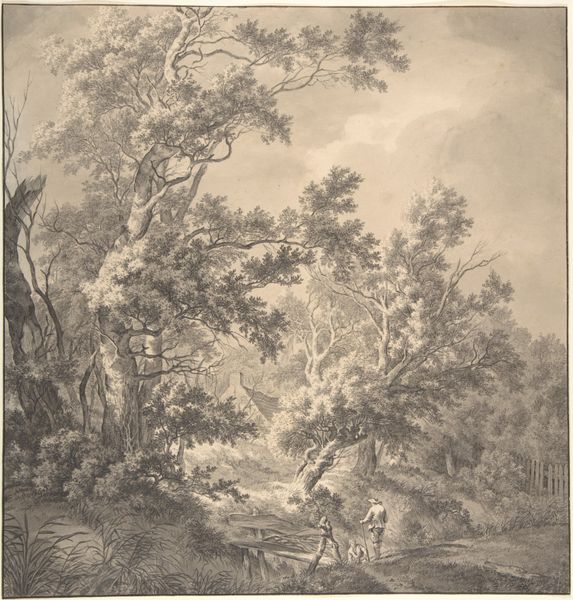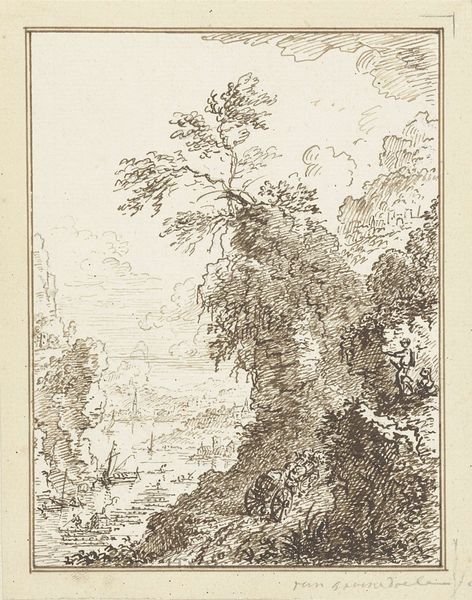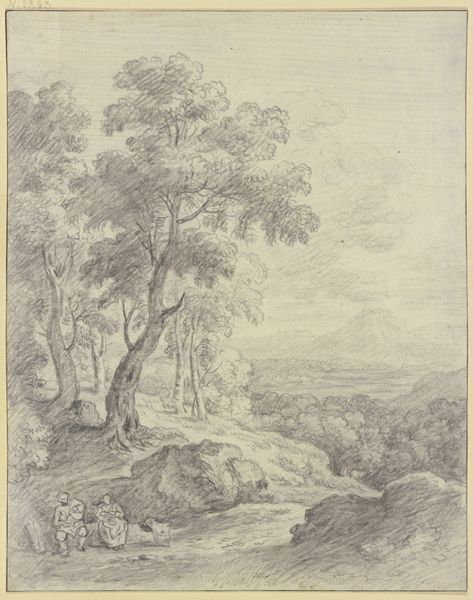
drawing, print, paper, ink, chalk, charcoal, black-chalk
#
drawing
# print
#
landscape
#
charcoal drawing
#
paper
#
ink
#
geometric
#
chalk
#
line
#
charcoal
#
black-chalk
Dimensions: 271 × 209 mm
Copyright: Public Domain
Editor: This drawing, "Forest Clearing," is listed as 'date unknown' by an anonymous artist. It's rendered in charcoal, chalk, and ink on paper, and it feels incredibly tranquil, almost dreamlike, in its monochrome tones. How might you interpret this work, looking at it with a materialist lens? Curator: This landscape isn't just a scene; it’s a document of material processes and social values. Look closely at the different strokes and applications of charcoal, chalk, and ink. Consider the availability of these materials and the labor required to transform them into art. How did access to paper and drawing materials shape artistic production at the time? Editor: So, you're suggesting we consider how the means of production influenced the image itself? Curator: Precisely. The layering of chalk and charcoal, for example, reveals a deliberate process. Also, consider what wasn't depicted and the absence of certain resources. Why is there a forest clearing here and not, say, signs of agrarian cultivation, timber production or perhaps urban life, common elements of many landscapes, all deeply engaged in shaping these scenes we deem "nature." Editor: That makes me think about the artist's relationship to the land. Curator: Yes! How are labor and social class revealed through the artist's choice to represent a pristine landscape seemingly untouched by modern life or economy? By engaging these details we avoid an essential reading of landscape imagery which helps connect to the real processes involved in shaping it, and who got to see or afford scenes like this? Editor: It's amazing to consider the socioeconomic aspects tied to seemingly simple materials. I hadn't thought about it that way before. Curator: Indeed. By analyzing the materials, production processes, and social context, we gain a richer understanding of the art's place within history.
Comments
No comments
Be the first to comment and join the conversation on the ultimate creative platform.
